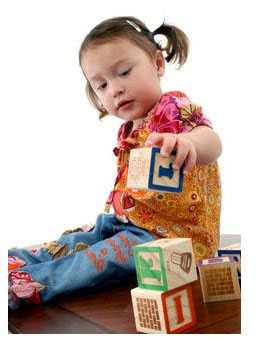Screening and Diagnosis
 Diagnosing autism spectrum disorder (ASD) can be difficult, since there is no medical test, like a blood test, to diagnose the disorders. Doctors look at the child’s behavior and development to make a diagnosis.
Diagnosing autism spectrum disorder (ASD) can be difficult, since there is no medical test, like a blood test, to diagnose the disorders. Doctors look at the child’s behavior and development to make a diagnosis.
ASD can sometimes be detected at 18 months or younger. By age 2, a diagnosis by an experienced professional can be considered very reliable.[1] However, many children do not receive a final diagnosis until much older. This delay means that children with an ASD might not get the help they need.
Diagnosing an ASD takes two steps:
- Developmental Screening
- Comprehensive Diagnostic Evaluation
Developmental Screening
Developmental screening is a short test to tell if children are learning basic skills when they should, or if they might have delays. During developmental screening the doctor might ask the parent some questions or talk and play with the child during an exam to see how she learns, speaks, behaves, and moves. A delay in any of these areas could be a sign of a problem.
All children should be screened for developmental delays and disabilities during regular well-child doctor visits at:
- 9 months
- 18 months
- 24 or 30 months
- Additional screening might be needed if a child is at high risk for developmental problems due to preterm birth, low birth weight or other reasons.
In addition, all children should be screened specifically for ASD during regular well-child doctor visits at:
- 18 months
- 24 months
- Additional screening might be needed if a child is at high risk for ASD (e.g., having a sister, brother or other family member with an ASD) or if behaviors sometimes associated with ASD are present
It is important for doctors to screen all children for developmental delays, but especially to monitor those who are at a higher risk for developmental problems due to preterm birth, low birth weight, or having a brother or sister with an ASD.
If your child’s doctor does not routinely check your child with this type of developmental screening test, ask that it be done.
If the doctor sees any signs of a problem, a comprehensive diagnostic evaluation is needed.
Comprehensive Diagnostic Evaluation
The second step of diagnosis is a comprehensive evaluation. This thorough review may include looking at the child’s behavior and development and interviewing the parents. It may also include a hearing and vision screening, genetic testing, neurological testing, and other medical testing.
In some cases, the primary care doctor might choose to refer the child and family to a specialist for further assessment and diagnosis. Specialists who can do this type of evaluation include:
- Developmental Pediatricians (doctors who have special training in child development and children with special needs)
- Child Neurologists (doctors who work on the brain, spine, and nerves)
- Child Psychologists or Psychiatrists (doctors who know about the human mind)
Learn about developmental screening and diagnostic tools »
References
- Lord C, Risi S, DiLavore PS, Shulman C, Thurm A, Pickles A. Autism from 2 to 9 years of age. Arch Gen Psychiatry. 2006 Jun;63(6):694-701.
E-mail Your Friends
"Children with autism spectrum disorder are not being diagnosed as early as they could be. Learn the signs of autism and get help if you’re concerned."
Share on Facebook

“Many children with autism spectrum disorder (ASD) are not being identified as early as they could be. Early identification is the most powerful tool we have right now to make a difference in the lives of children with ASD.”
Share on Twitter
“Too many children w/ autism are not being identified as early as they could be. Earlier is better. #ActEarly”
- Page last reviewed: March 10, 2017
- Page last updated: February 26, 2015
- Content source:


 ShareCompartir
ShareCompartir